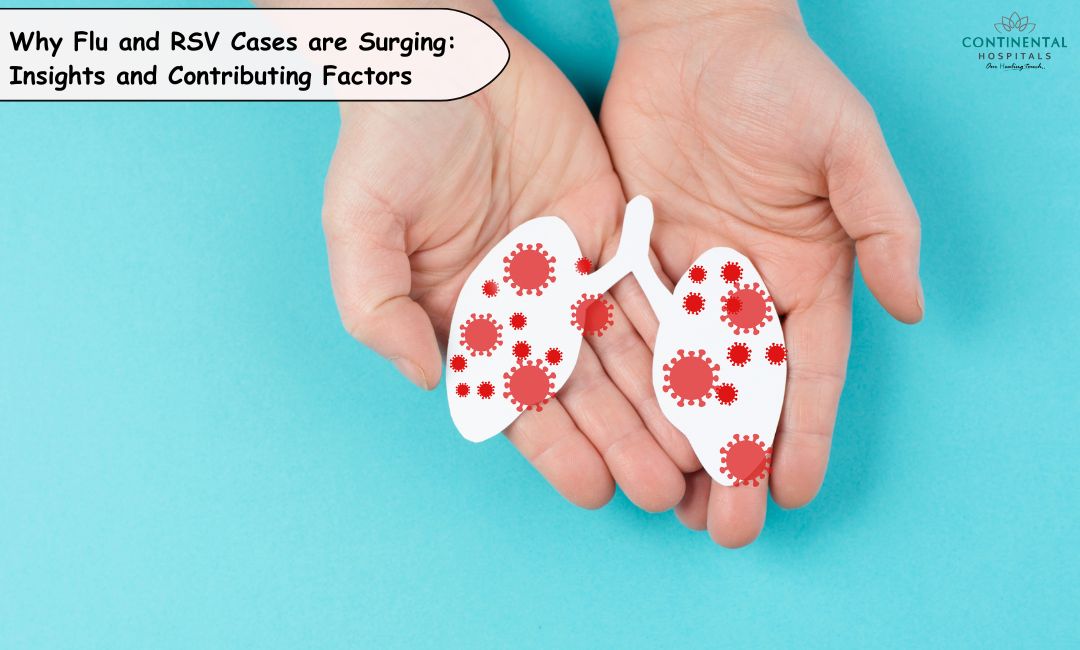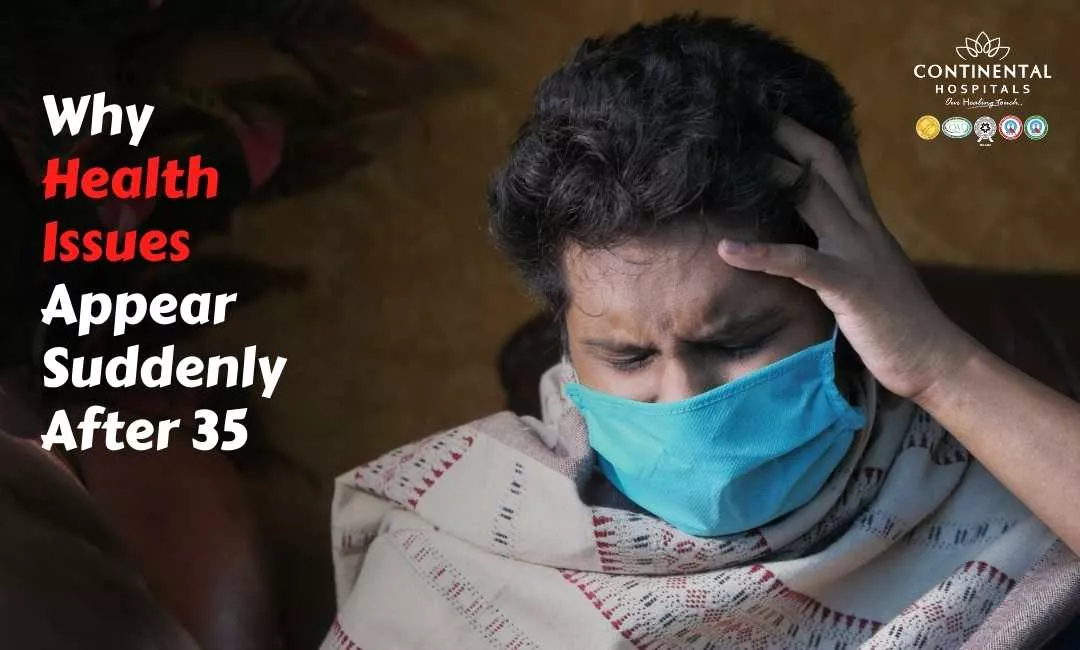In recent times, the medical community has observed a substantial surge in cases of respiratory illnesses, notably influenza (flu) and respiratory syncytial virus (RSV). These spikes have raised concerns globally, leading to an urgent quest for understanding the contributing factors behind these outbreaks. Exploring the dynamics and underlying causes of these surges is crucial in devising effective preventive measures and healthcare strategies. Let's delve into the insights and contributing factors behind the escalation of flu and RSV cases.
Influenza, commonly known as the flu, and respiratory syncytial virus (RSV) are both contagious respiratory illnesses that can cause similar symptoms but are caused by different viruses. Influenza typically manifests with symptoms such as fever, cough, sore throat, body aches, fatigue, and sometimes, respiratory issues. It can lead to severe complications, especially in high-risk groups like the elderly, young children, and individuals with certain health conditions. Vaccination is a crucial preventive measure against the flu, with annual vaccines tailored to prevalent strains. On the other hand, RSV primarily affects young children and infants, causing symptoms like coughing, wheezing, runny nose, and fever. While most cases result in mild illnesses, RSV can lead to severe respiratory infections in vulnerable populations, including premature infants and older adults. There's no specific vaccine for RSV, but preventive measures like hand hygiene and avoiding close contact with sick individuals are crucial in curbing its spread. Both influenza and RSV pose significant public health concerns during their respective seasons and require appropriate measures for prevention and management.
Factors Contributing to the Surge
1. Pandemic-related dynamics
The covid-19 pandemic and its associated mitigation measures have played a significant role in the resurgence of flu and RSV. The relaxation of restrictions, increased social interactions, and reduced adherence to preventive measures have likely facilitated the spread of these respiratory viruses.
2. Altered immunity and exposure
The pandemic disrupted typical patterns of exposure to various pathogens. Reduced exposure to common viruses due to lockdowns and increased isolation might have weakened immune responses in certain populations, making them more susceptible to infections like flu and RSV upon re-emergence.
3. Viral interactions and competition
There might be a complex interplay between different viruses. With COVID-19 dominating the virological landscape, there could have been a suppression of flu and RSV transmission during its peak. As COVID-19 cases declined or became more manageable, other viruses found room to circulate and propagate.
4. Variability in strain circulation
Flu and RSV viruses are known for their ability to mutate. Variability in strains and potential evasion of immunity might contribute to increased cases, as new strains might evade previous immunity or vaccinations.
5. Behavioral changes
Shifts in behavior, such as reduced mask-wearing and decreased emphasis on hand hygiene, could also facilitate the transmission of respiratory viruses, contributing to the surge in cases.
6. Susceptible populations
Certain demographics, including young children, older adults, and individuals with underlying health conditions, remain more susceptible to severe complications from these viruses. The vaccination rates among these groups might also impact the severity and spread of the diseases.
Consult a GENERAL PHYSICIAN if you or a family member, especially infants, elderly individuals, or those with underlying health conditions, develop severe symptoms associated with the flu or RSV.
What’s Happening with Covid Variant Jn.1 and Rsv?
Jn.1:
Rapidly spreading: This subvariant of omicron has quickly become dominant in many countries, including the us, accounting for around 44% of cases. This suggests it's more transmissible than other strains.
Severity unclear: While data is still emerging, there's no evidence yet that jn.1 causes more severe illness compared to other omicron variants.
Vaccine efficacy: Existing COVID vaccines, especially updated boosters, are expected to offer good protection against jn.1, reducing the risk of serious illness and death.
Monitoring remains crucial: public health agencies are closely monitoring jn.1's spread and potential impact on hospitals.
RSV:
Seasonal surge: Like other respiratory viruses, RSV typically sees a rise in cases during winter months. This year, some regions experienced higher than usual RSV circulation, putting vulnerable populations like infants and older adults at risk.
Symptoms similar to COVID-19: Differentiating RSV and COVID-19 based on symptoms alone can be tricky, as both share common features like cough, fever, and congestion. Testing is vital for accurate diagnosis.
Prevention key: Frequent handwashing, proper cough etiquette, and staying home when sick can help curb the spread of both RSV and COVID-19.
How to control influenza (flu) and RSV?
Vaccination: vaccination is one of the most effective ways to prevent influenza. Yearly flu vaccines are recommended for everyone over 6 months of age. There is no RSV vaccine available for the general public, but certain high-risk groups might receive palivizumab, a medication that can help prevent severe rsv infection in infants and young children at high risk.
Hygiene practices:
- Wash hands frequently with soap and water for at least 20 seconds, especially after coughing, sneezing, or touching surfaces.
- Use alcohol-based hand sanitizers when soap and water are not available.
- Avoid touching your face, especially your eyes, nose, and mouth, to reduce the risk of transferring the viruses from surfaces to yourself.
Respiratory etiquette:
- Cover your mouth and nose with a tissue or your elbow when coughing or sneezing.
- Dispose of used tissues properly and wash your hands afterward.
Cleaning and disinfection:
- Clean and disinfect frequently touched surfaces such as doorknobs, light switches, and countertops regularly.
Avoid close contact:
- Avoid close contact with individuals who are sick, and if you are sick, limit contact with others to prevent transmission.
Stay home when sick:
- If you're feeling unwell with flu-like symptoms or respiratory illness, stay home to prevent spreading the virus to others.
Seek medical care:
Consult a GENERAL PHYSICIAN if you or a family member, especially infants, elderly individuals, or those with underlying health conditions, develop severe symptoms associated with the flu or RSV.
Related Blog Articles:
1. Staying Healthy in the Rainy Season
2. Influenza (Flu) in Children
3. Importance of Flu Vaccines: Myth vs. Fact
.webp)














